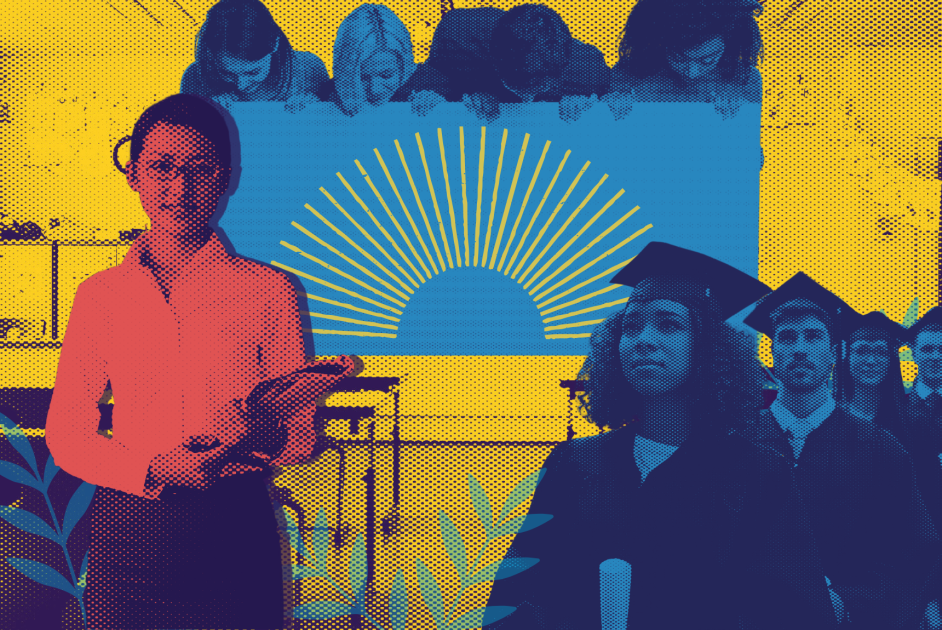Kambar: In my tenure as a principal, I’ve witnessed a troubling decline in students aspiring to become teachers. Those who do often face mounting challenges that threaten their passion. Yet, within our schools lies the potential to reverse this trend.
Education leaders who embrace a “grow your own” ethos will find a beacon of hope for addressing future teacher shortages. By nurturing the aspirations of our own students, we can cultivate a new generation of educators deeply invested in our communities. These students, already familiar with our values and challenges, are uniquely positioned to become the compassionate and committed teachers we need.
As stewards of our schools, principals hold the responsibility to inspire and equip our students to take up the mantle of teaching. By doing so, we not only address the shortage but ensure the torch of knowledge and empathy continues to burn brightly for generations to come.
About This Series
In this biweekly column, principals and other authorities on school leadership—including researchers, education professors, district administrators, and assistant principals—offer timely and timeless advice for their peers.
And that inspiration doesn’t need to come in a formal grow-you-own initiative. As principals, we should always be looking for new opportunities to introduce students to the transformative power of the education profession. For example, earlier this year, I invited a student to participate in the hiring process for an assistant principal—only to later learn that the experience inspired her to want to become an educator herself.
It is with immense pride and hope that I share that student’s reflection on her decision. Mina Etemadi’s journey reflects the very essence of what it can look like to grow our own.
Mina: When I joined the panel to help choose our new assistant principal earlier this year, I didn’t realize how much it would change me. I walked in nervous and unsure—but the moment I entered that room, something shifted. I didn’t feel like “just a student.” I felt seen, respected, and valued. I was sitting beside educators and leaders making a decision that would shape our entire school. In that moment, I realized—I want to be someone who shapes futures, too. That’s when I truly felt called to become a teacher.
I’ve always been passionate about helping others and being involved. Whether coaching volleyball, joining my principal at a regional student-leadership conference, or working with the principal’s student-advisory council, I found joy in connecting with people, especially students. But it wasn’t until I sat on that hiring panel—where I saw teachers not in “teacher mode” but as humans with their own hopes and challenges—that I saw the full picture. I saw how much love, resilience, and leadership it takes to be an educator. And I knew: That’s the kind of leader I want to be.
The best teachers I’ve had—like Mrs. Ballard, who believed in me, even when I doubted myself—showed me what great teaching truly is. It’s about patience, creativity, and empathy. It’s about seeing potential in every student and giving them the space to rise. A great teacher doesn’t just deliver lessons—they create a safe space to ask questions, to dream, to fail, and to try again. That’s the classroom I hope to build one day: one filled with trust, curiosity, and belonging.
I believe student voice should be at the center of how we shape education. Being part of the vice principal selection reminded me that students bring a powerful perspective. We walk the hallways, sit in the classrooms, and experience every corner of our building. Letting us share our voice in decisions—not just about who leads us but how we’re taught—can create a school that works for everyone. If you’re not listening to students, then who are you listening to?
I recognize that being a teacher isn’t easy. The challenges educators face—burnout, lack of respect, and feeling unheard—are real. Many pour so much of themselves into their students yet often don’t receive the support they need.
If we want more students to consider this path, we need to change how we treat our educators. That starts with policies that honor their time, their expertise, and their mental health—improved resources, smaller class sizes, more planning time, and a stronger voice in decisions. And it starts with students recognizing and appreciating the humans behind the role.
So, with all these challenges, why am I choosing to become a teacher? It’s a fair question—and one I’ve thought a lot about. The answer is both simple and complex. Teachers are builders. They shape lives, lift voices, and carry stories. They don’t just teach content—they teach confidence, purpose, and power.
Yes, I’ve decided to become a public school teacher. I want to make a difference in the lives of children the way Mrs. Ballard did for me. But it’s also more than that. Teaching means understanding that humans are imperfect. We all carry our own struggles, and that requires meeting students where they are—emotionally, intellectually, and sometimes even spiritually. That’s not easy, but it is worth it.

